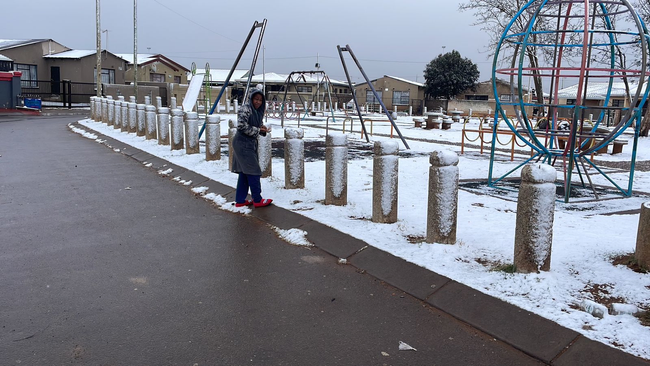The Rise of Inflatable Domes: A Revolution in Temporary Architecture

In architecture, innovation is the key to evolution. As urban spaces grow denser and the need for flexible, sustainable structures rises, architects and designers turn to new materials and methods. The inflatable dome is one such innovation that is capturing the imagination of the design world. These lightweight, versatile structures are revolutionising temporary architecture in previously unimaginable ways.
A Brief History of Inflatable Domes
To truly understand the significance of inflatable domes in contemporary architecture, it’s essential to delve into their origins. Inflatable structures have a surprisingly long history, with roots dating back to the early years. However, thanks to advancements in materials and manufacturing techniques, they gained popularity during that era.
Inflatable domes found their niche in various industries, from military applications to entertainment venues. Their ability to be quickly deployed, transported, and assembled made them invaluable for temporary events and emergency shelters. Over time, designers began experimenting with different shapes, sizes, and materials, pushing the boundaries of what inflatable structures could achieve.
The Advantages of Inflatable Domes
The appeal of inflatable domes lies in their versatility and practicality. Unlike traditional structures, which require extensive time and resources for construction, domes can be set up in a fraction of the time. It saves costs and reduces the environmental impact associated with conventional building methods.
Moreover, inflatable domes are remarkably lightweight, making them easy to transport and install in remote or challenging locations. Their inflatable nature allows them to withstand high winds and other weather conditions, providing a durable and resilient solution for temporary shelter or event spaces.
Another significant advantage of inflatable domes is their adaptability. Unlike fixed structures, which are static in design, domes can be easily modified to suit different purposes. Whether used as a pop-up retail space, a temporary exhibition hall, or a disaster relief shelter, domes offer unparalleled flexibility for designers and organisers alike.
Applications Across Industries
The versatility of inflatable domes has led to widespread adoption across various industries. They provide a dynamic and eye-catching alternative to traditional venues in events and entertainment. From music festivals to corporate gatherings, domes offer a unique atmosphere that captivates attendees and creates memorable experiences.
Inflatable domes have become indispensable for indoor training facilities and temporary arenas in sports. Their ability to create a controlled environment, shielded from the elements, ensures optimal conditions for athletes and spectators alike. Domes can be quickly erected and dismantled, allowing for more excellent scheduling and venue management flexibility.
Beyond entertainment and sports, inflatable domes are also making waves in disaster relief and humanitarian aid. Their rapid deployment capabilities and durability make them ideal for providing temporary shelter to those affected by natural disasters or conflicts. Organisations have utilised domes to create safe and secure spaces for displaced populations, demonstrating their potential to save lives in times of crisis.
Pushing the Boundaries of Design
As the popularity of inflatable domes continues to grow, designers are pushing the boundaries of what these structures can achieve. Technology advances in materials science and computational design have created increasingly complex, innovative, inflatable forms.
From geodesic domes to pneumatic pavilions, architects are exploring new ways to harness the potential of inflatable structures. These experimental designs showcase the aesthetic possibilities of inflatable domes and highlight their environmental benefits. Designers create sustainable structures that minimise their ecological footprint using lightweight materials and efficient construction methods.
Overcoming Challenges and Limitations
While inflatable domes offer numerous advantages, they have challenges and limitations. One of the primary concerns with inflatable structures is their susceptibility to punctures and leaks. However, advances in materials technology have led to the development of more robust and durable fabrics, mitigating this risk to a certain extent.
Another challenge is the perception of inflatable domes as temporary or disposable structures. While they are often used for short-term events or emergency shelters, there is a growing recognition of their potential for long-term or permanent applications. By addressing concerns about durability and stability, architects and designers are working to overcome these perceptions and unlock new possibilities for domes in the built environment.
Additionally, inflatable domes face regulatory hurdles and zoning restrictions in some jurisdictions. Building codes and safety regulations may only sometimes accommodate the unique characteristics of inflatable structures, leading to delays or complications in the permitting process. However, industry professionals and organisations’ advocacy efforts are helping raise awareness and promote the adoption of more flexible regulations for domes.
Sustainability and Environmental Impact
In an era of increasing environmental awareness, sustainability is a crucial consideration for architects and designers. Fortunately, inflatable domes offer several eco-friendly advantages compared to traditional building materials and methods. Their lightweight construction reduces the material required, resulting in lower carbon emissions during manufacturing and transportation.
Moreover, inflatable domes can be designed to maximise natural light and ventilation, reducing the need for artificial heating and cooling systems. It lowers energy consumption and creates a more comfortable and environmentally friendly indoor environment. Additionally, the temporary nature of inflatable structures encourages reuse and repurposing, minimising waste and promoting circular design principles.
Conclusion
Inflatable domes represent a bold new frontier in temporary architecture. Their versatility, practicality, and adaptability reshape our thoughts about temporary structures. From events and entertainment to disaster relief and beyond, domes offer a sustainable and dynamic solution to the challenges of contemporary urban living.
As technology continues to evolve and design boundaries are pushed ever further, the future of inflatable domes looks brighter than ever. With their ability to provide shelter, create memorable experiences, and inspire awe, domes are truly revolutionising the world of architecture, one breath at a time.






